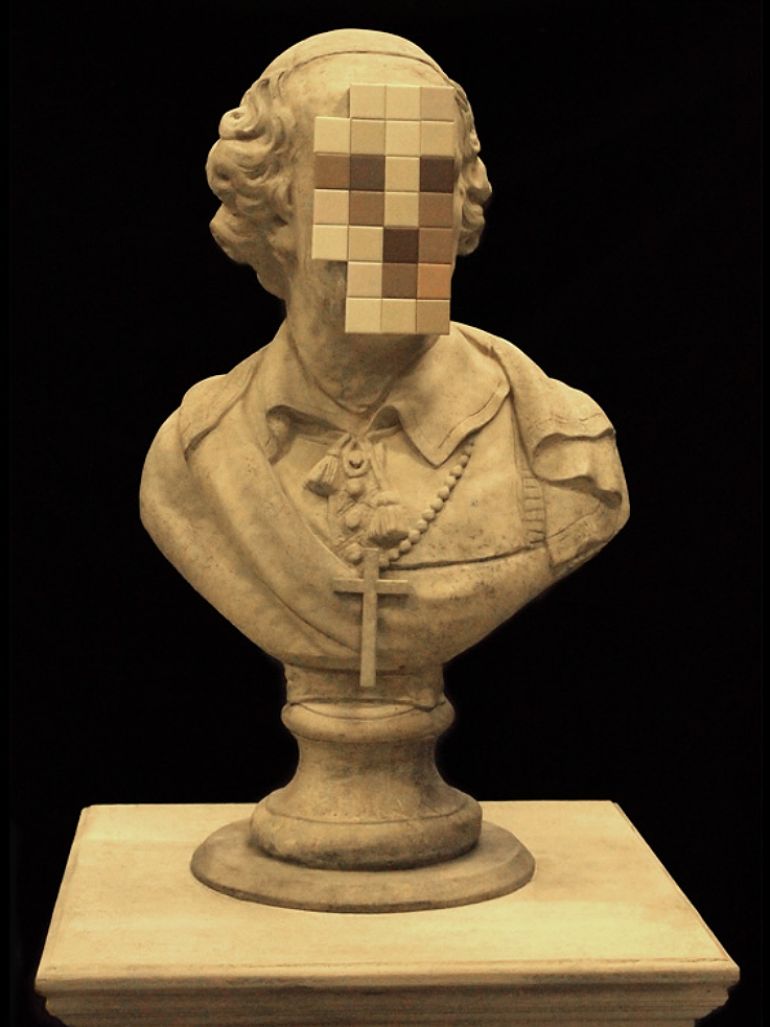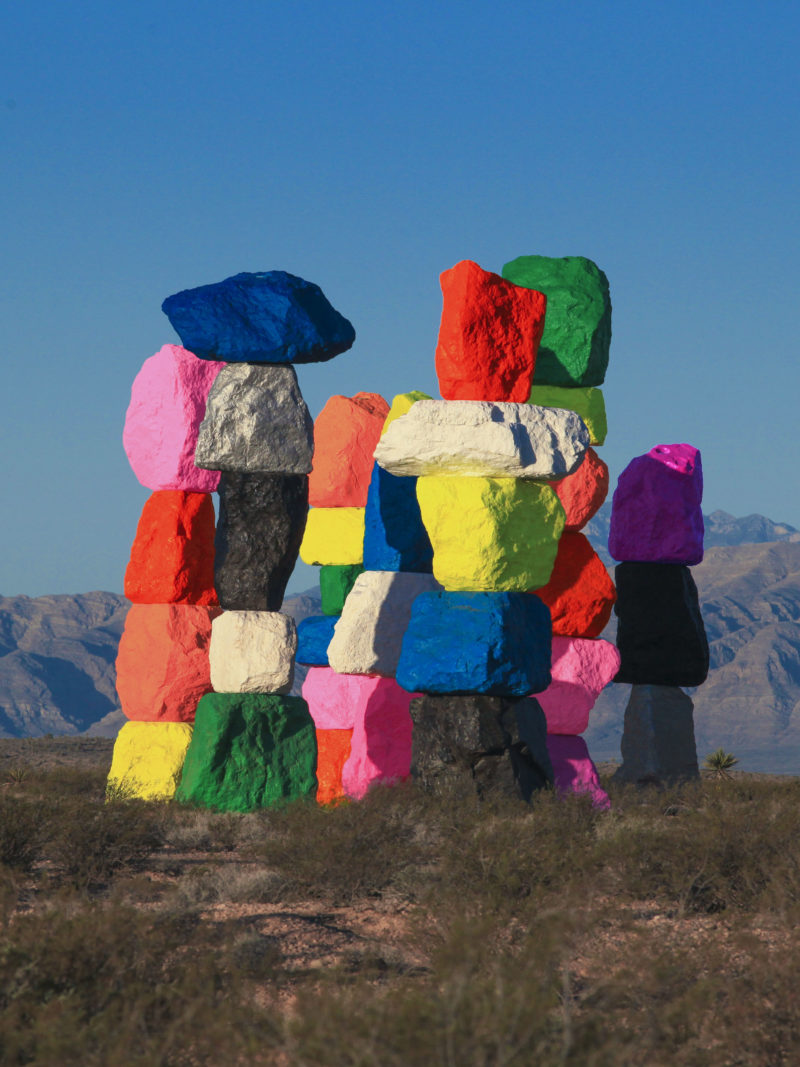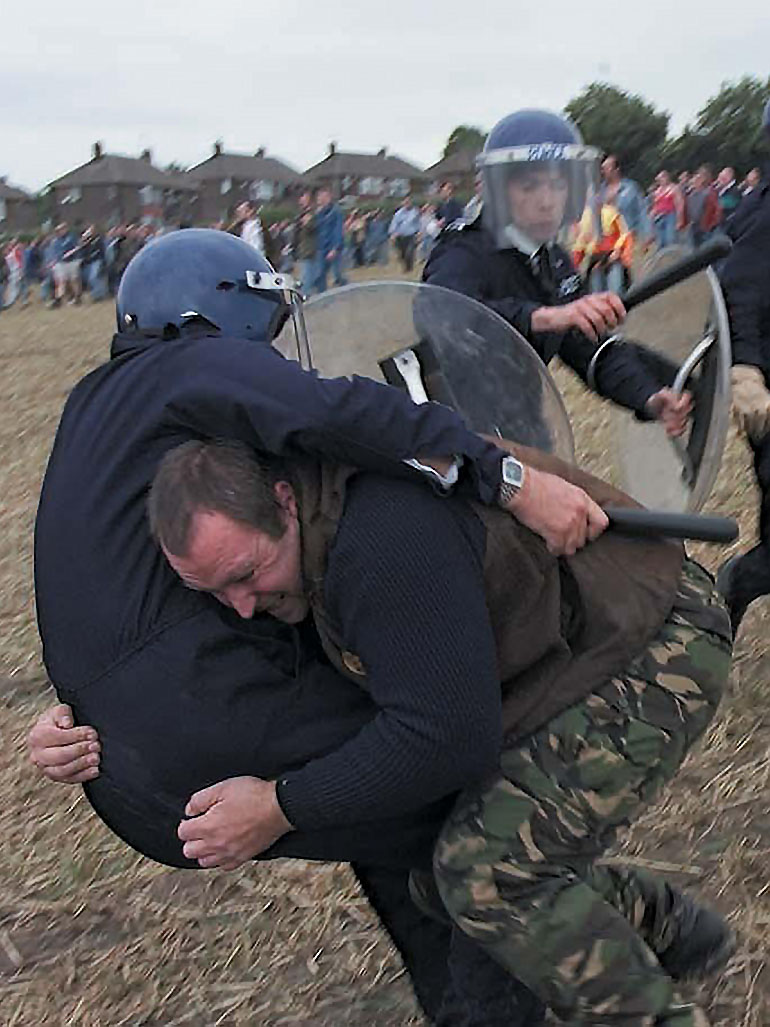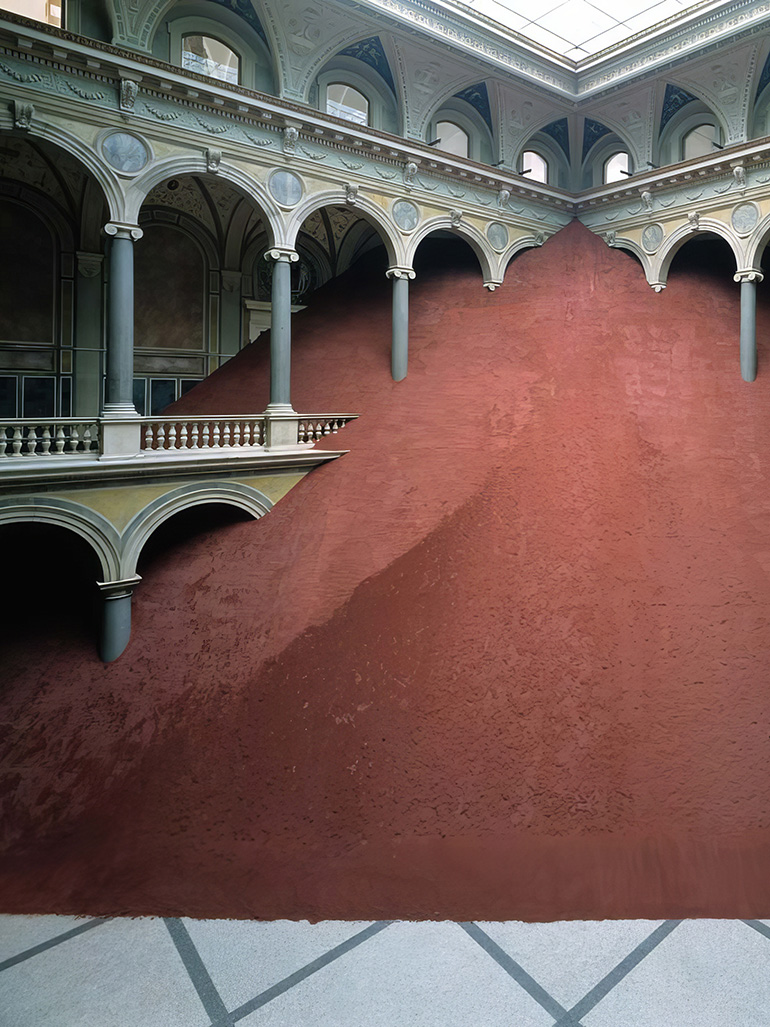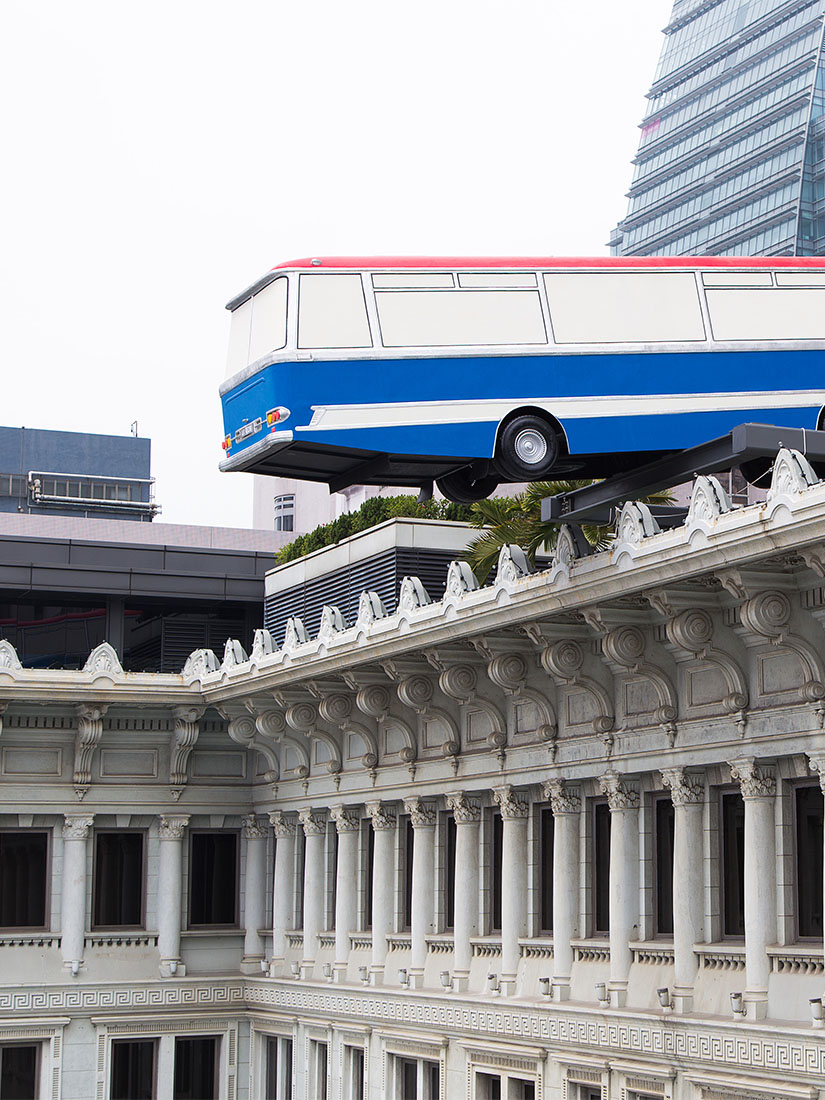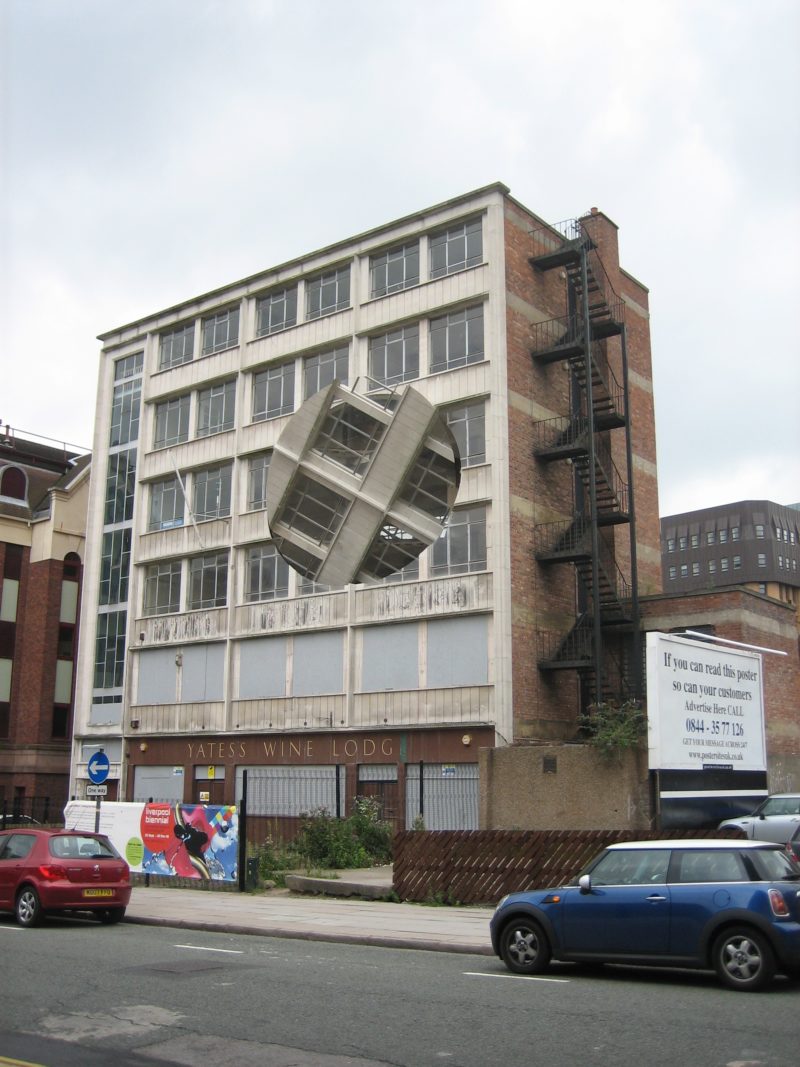
Permanently closed
The artwork is permanently closed and no longer viewable as of January 2011.
Introduction
Turning the Place Over was a temporary artwork that was created for the European Capital of Culture. Liverpool 1 got its turn to host the European Capital of Cultural in 2007, a few years after the city received its UNESCO World Heritage Site designation. The European Capital of Culture saw several events and art exhibitions organized with the aim of shining a light on Liverpool’s culture, locations, and people.
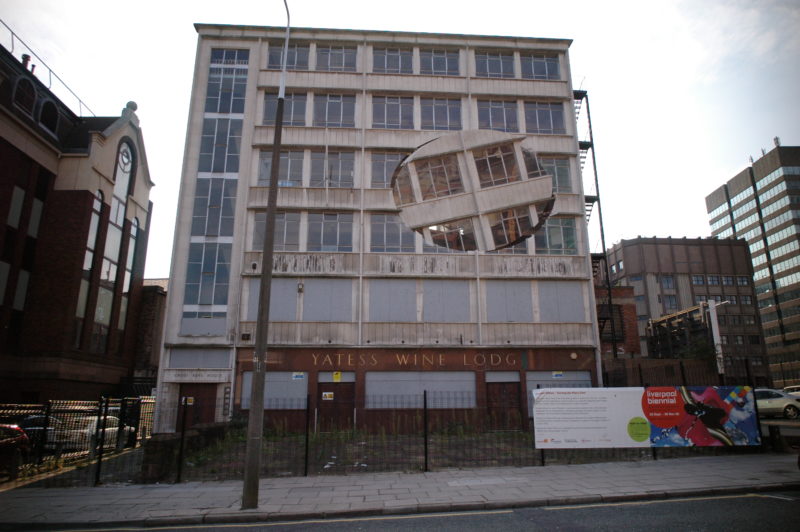
Turning the Place Over is still regarded today as one of the most daring pieces of public art to be commissioned in the country. It is also one of Wilson’s most radical intrusions into architecture 2 to date. In this piece, Richard Wilson 3 turned a building in Liverpool inside out.
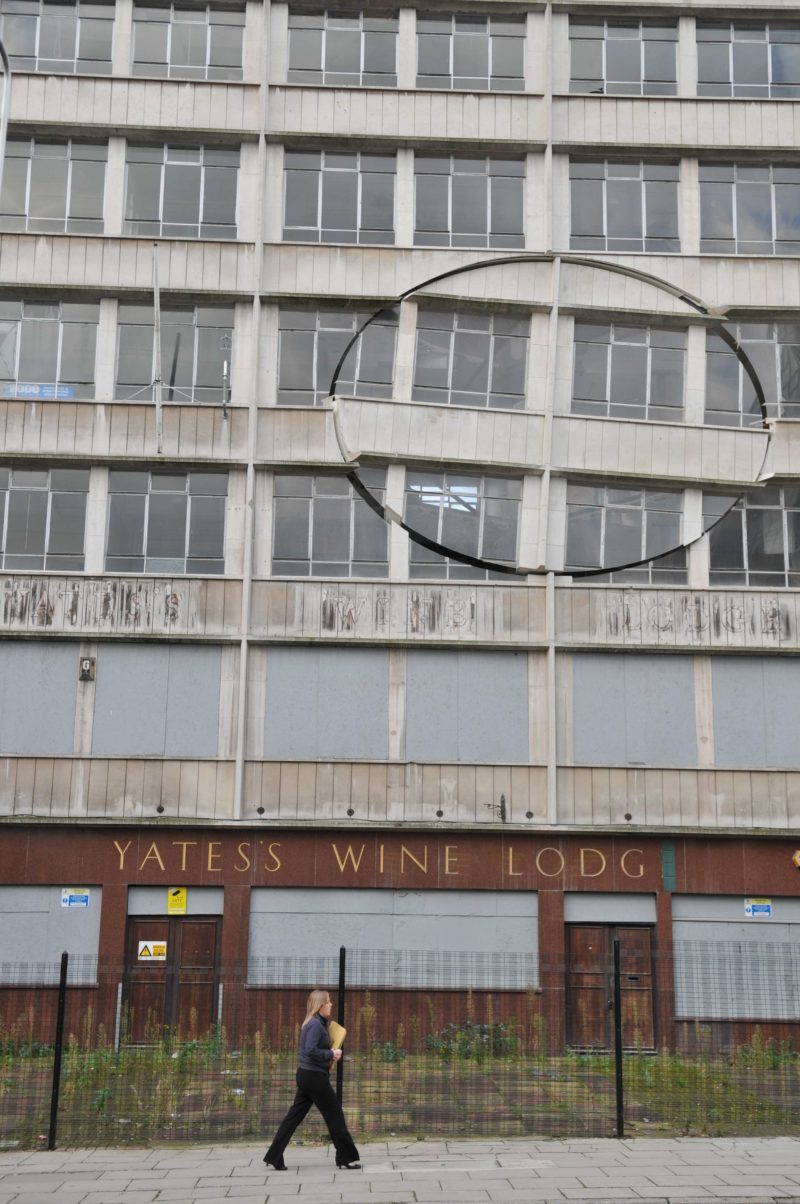
Turning the Place Over
Turning the Place Over consisted of an 8-meter diameter ovoid that had been cut from the facade of the abandoned Cross Keys House located in Liverpool’s shopping center. The ovoid cut was designed to oscillate in 3D. Wilson placed the revolving exterior on a specially designed giant rotator, like the kind that is commonly used in the shipping and nuclear sectors.
The revolving façade is what acted as a massive opening and closing window that would often offer viewers and passers-by repeated sights of the building’s interior. Not only would the rotating disc move round and round, but it was also designed to move inside out on its axis in a two-minute cycle.
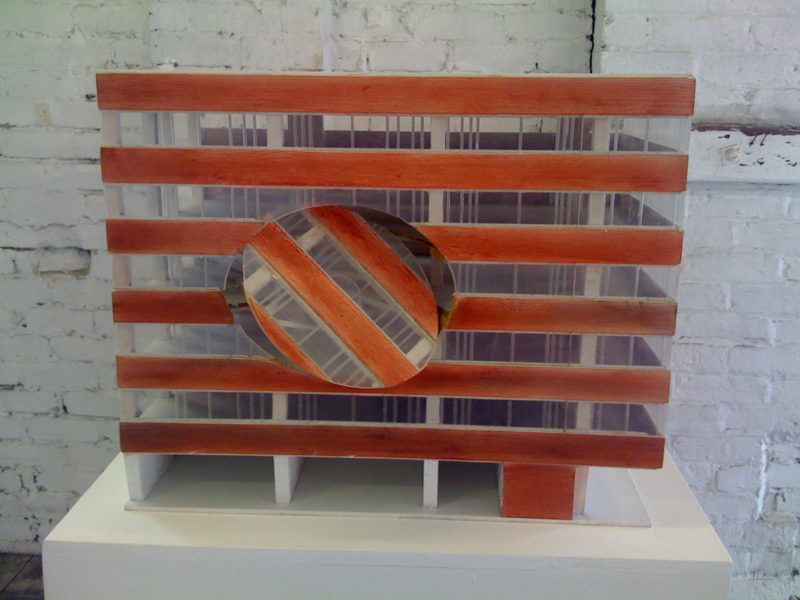
This surreal spatial stunt with the building is also what inspired a naïve awe. Turning the Place Over may have been commissioned for the town in 2007. However, the project remained active from June 20, 2007, until it was taken down on January 8, 2011, having been in operation for more than three and a half years. Wilson conceptualized the idea earlier in 2004 before sharing his thoughts with the director of the Liverpool Biennial.
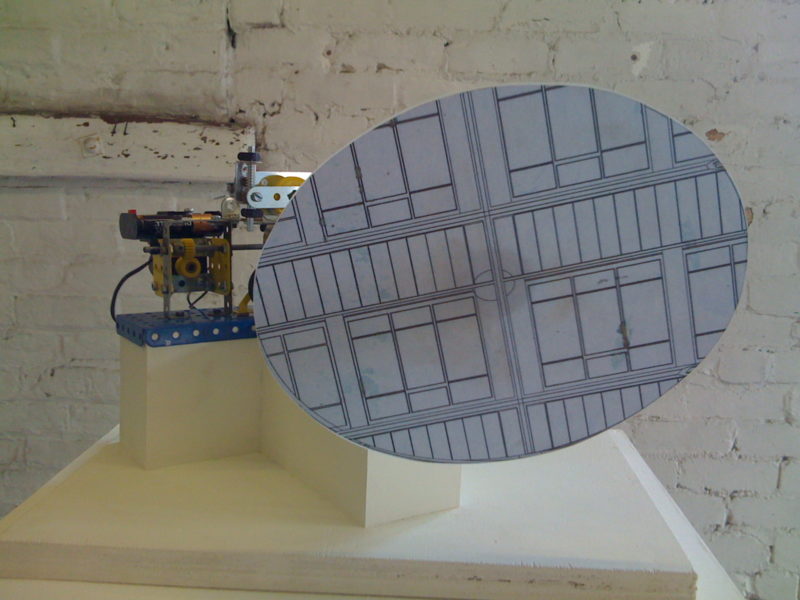
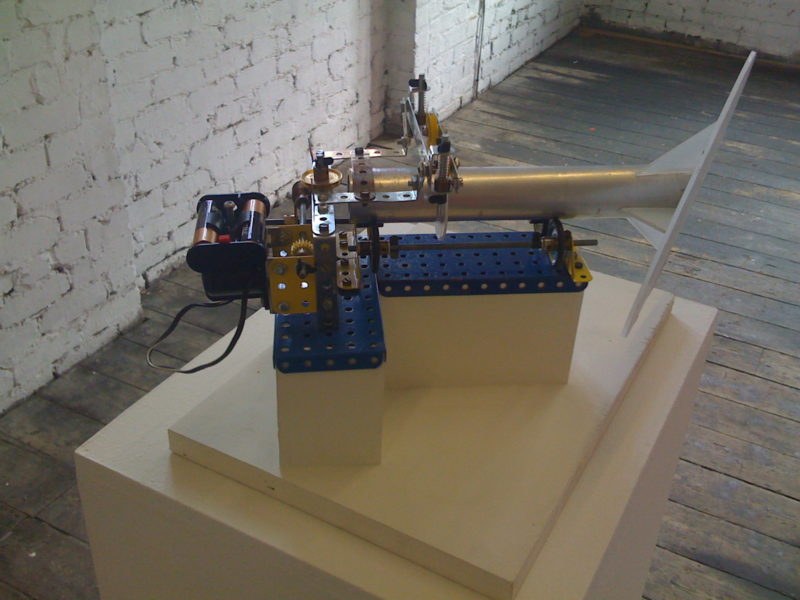
Turning the Place Over rotated non-stop during daylight hours except for periodic maintenance breaks and has been seen by an estimated three and a half million people. Various YouTube videos generated hundreds of thousands of views online.
Location & funding
It took a while before Wilson and his team found a building. They settled on the abandoned Cross Keys House, located right across Moorfields Station, because it was under the local council’s control. Once it was complete, the installation 4 became a permanent fixture of the Capital of Culture public art program.

The entire project is was funded by the Liverpool Culture Company and costs approximately £450,000 to pull off successfully. This powerful concept allowed the artist to turn an old forgotten building that no one was paying attention to and turned it into a masterpiece.
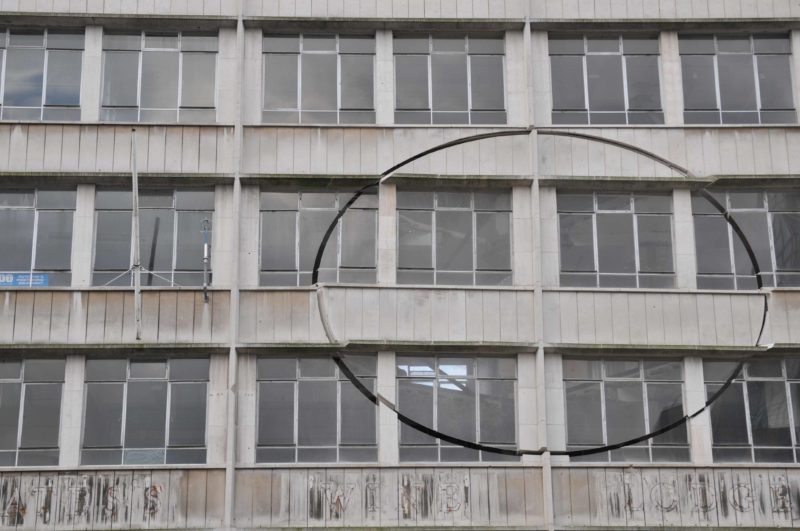
The meaning
Wilson describes himself as an artist who uses architecture as source material for his sculptures to disrupt our regular association with things to find new aesthetic potential, challenging and tweaking the viewer’s preconceptions.
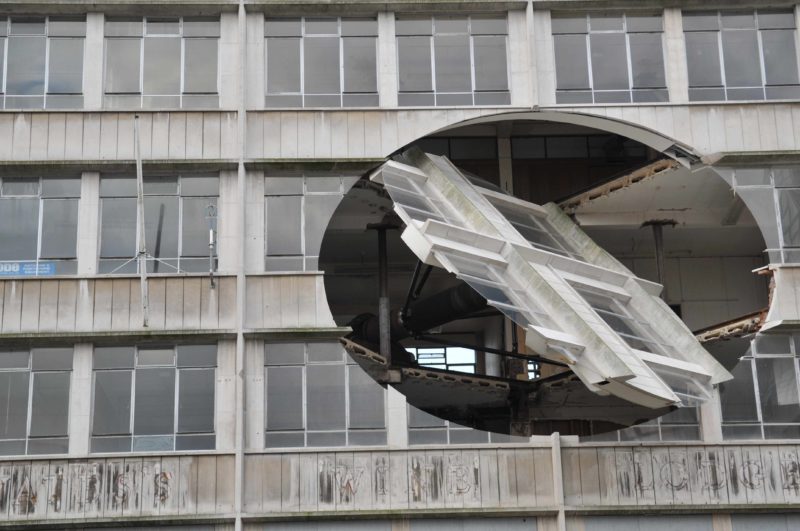
With Turning the Place Over, he did not just manage to create an eerie, space portal-looking sculpture that attracted millions of eyeballs but also demonstrated the transformative power of art in human society. Speaking about his artistic practice, Wilson said in a 2015 interview 56:
(…) I undo or de-construct. And by the deconstructive act of revealing you break the skin of an object and show that there’s much more than what you would assume going on under the surface.
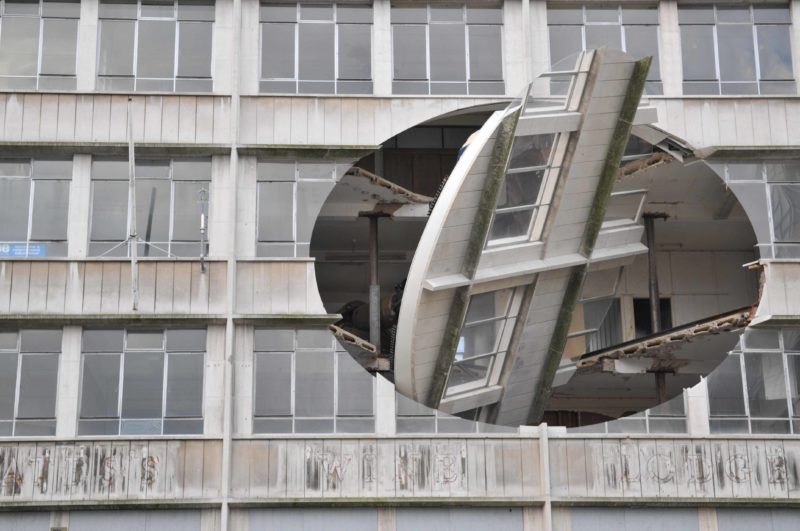
The work clearly reminds art lovers of Gordon Matta-Clark’s 7 intervention 8 Conical Intersect 910 from 1975, yet Wilson decided not to get rid of the cut-out wall and instead use it as a rotating element.
About Richard Wilson
Wilson has built a name for himself in art circles for staging ‘impossible’ scenes and exhibitions. Wilson first shot into distinction in the late 1980s when he filled London’s 11 Saatchi Gallery 12 with recycled engine oil, attracting visitors one by one into an inky gloomy void.

In another fun installation 1314 inspired by the movie Italian Job, Wilson suspended 15 a life-sized replica of a bus on the roof of the De La Warr Pavilion, located in Bexhill on Sea as well on Hong Kong’s 16 Peninsula Hotel. Wilson’s works work on many different levels. However, one of the most interesting things about his artworks is that they always invoke a sense of wonder and childlike curiosity in his audiences.
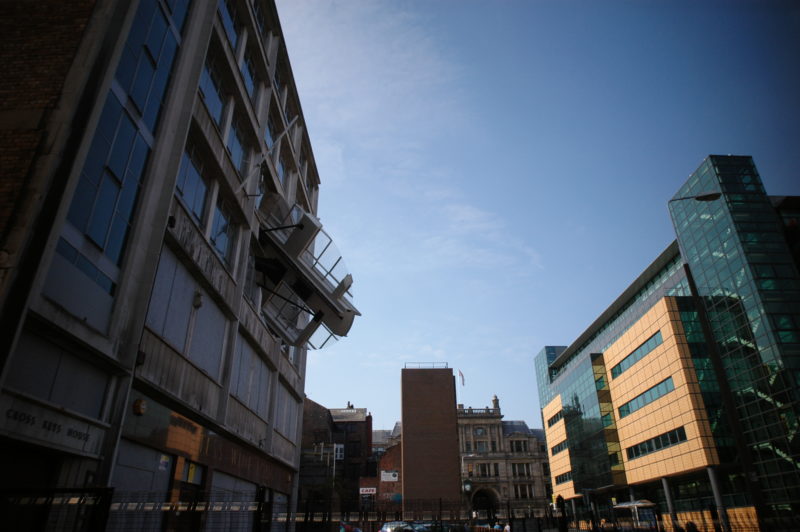
More by Richard Wilson
Explore nearby
Liverpool, UK
 Banksy's Cardinal Sin1 km away
Banksy's Cardinal Sin1 km away Ugo Rondinone's colorful rocks1 km away
Ugo Rondinone's colorful rocks1 km away Jeremy Deller's Battle of OrgreavePerformance ended (staged in 2002)108 km away
Jeremy Deller's Battle of OrgreavePerformance ended (staged in 2002)108 km away Keith Arnatt's Self BurialPerformance ended (staged in 1969)191 km away
Keith Arnatt's Self BurialPerformance ended (staged in 1969)191 km away Magdalena Jetelová's pyramid installationsExhibition ended (dismantled in 1991)220 km away
Magdalena Jetelová's pyramid installationsExhibition ended (dismantled in 1991)220 km away
